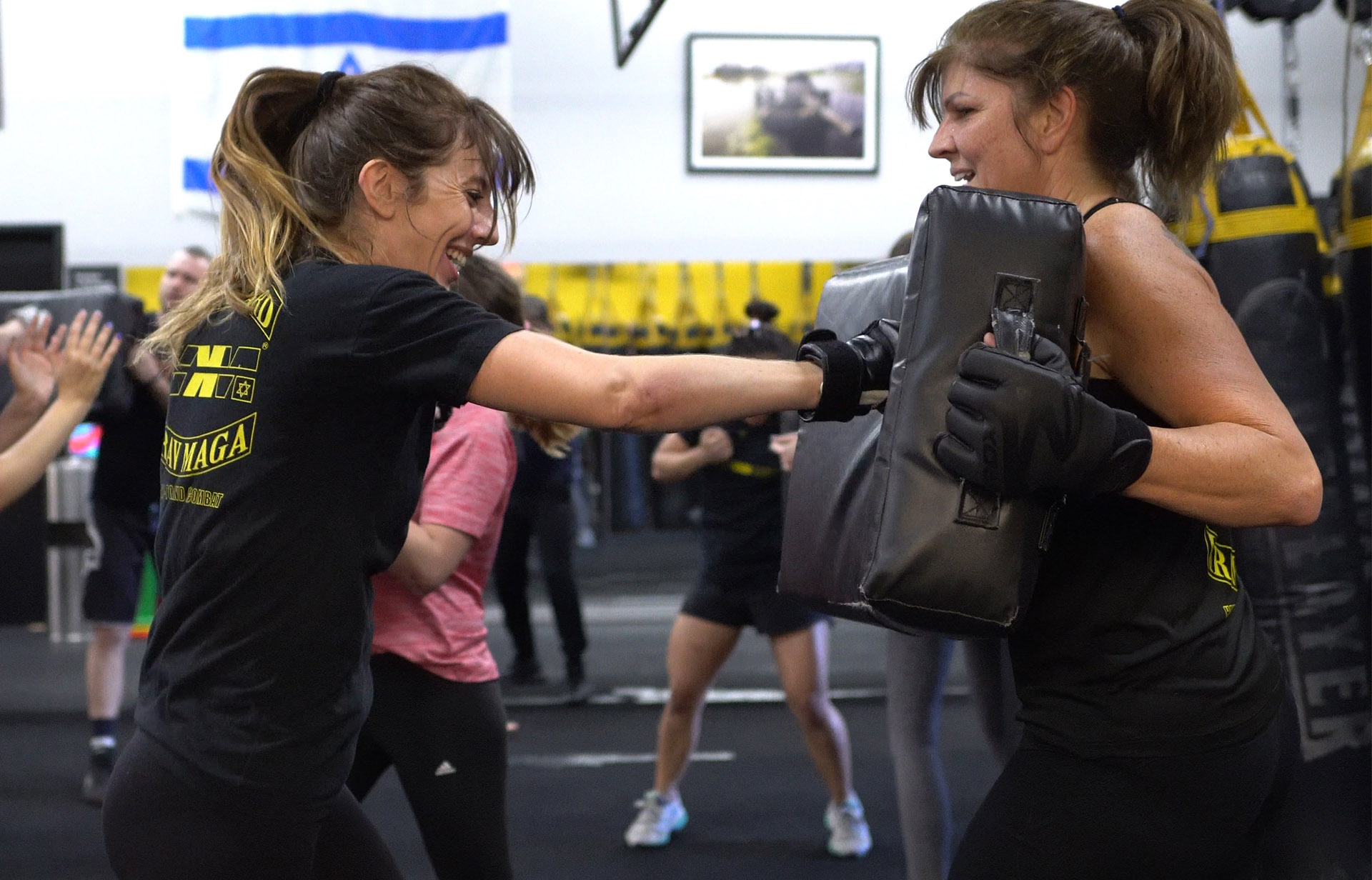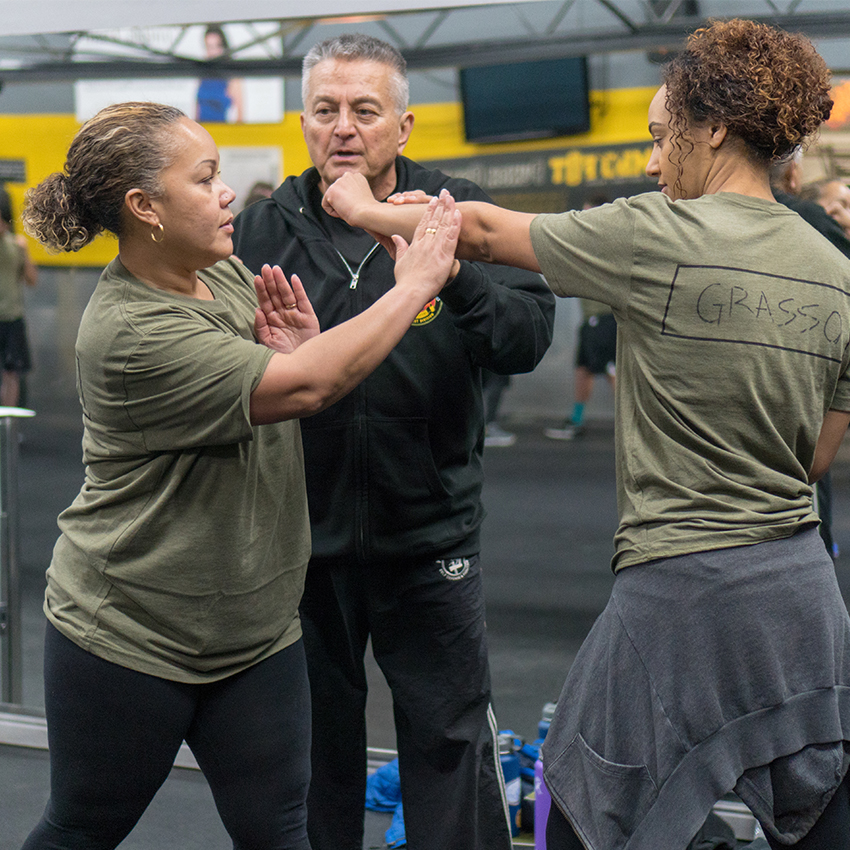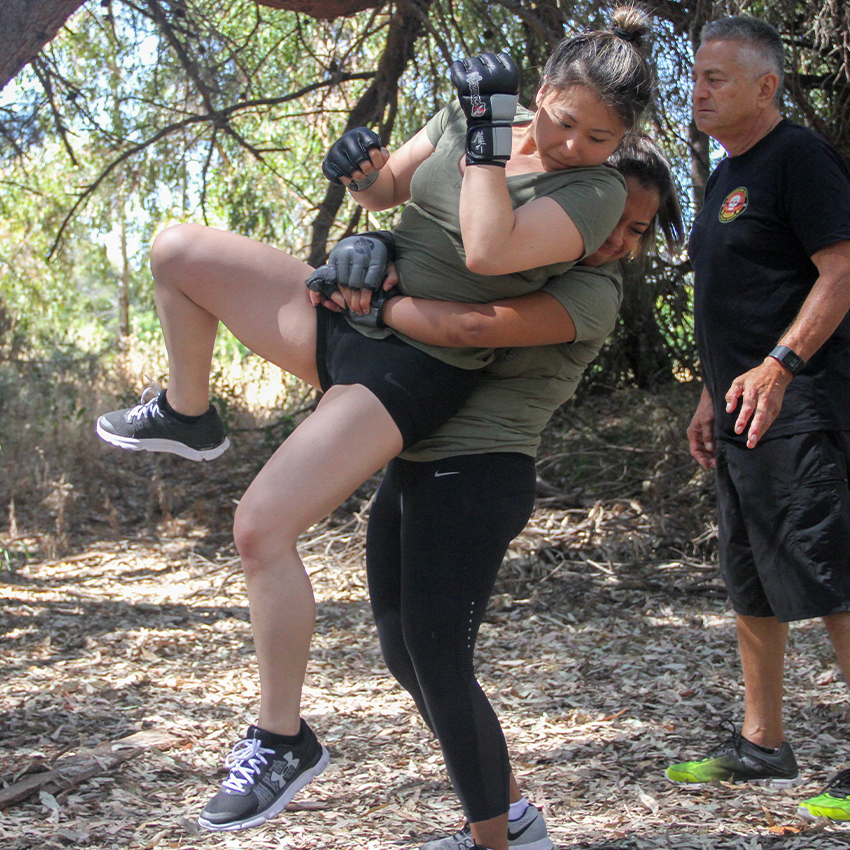
The things no one tells you about Krav Maga training.
One of the greatest joys of training in Krav Maga is encountering the unexpected. That first time someone walks into a dojo, they’re fairly sure they know what they’re there to learn. They’ve come to learn how to take names and kick butt, increase their physical fitness, possibly build some relationships. Those are all part of what happens, but there is so much more that no one tells you.
Even after you read this, you can’t really understand all the possibilities. That won’t come until you start your own training. We are a doing discipline, both in the dojo and out in the world.
Here are five things no one tells you about training in Krav Maga.

1. Sometimes it does look like the movies.
Most of the time when you walk into a dojo, any kind of dojo, they’ll tell you “Martial arts isn’t like it is in the movies.” That’s true. Training in martial arts is not like stunt fighting. The flashy stuff onscreen is there to look good, not to be effective. It’s enhanced with camera angles and CGI. It’s not real. That being said, Krav Maga does look like the movies sometimes. This system of martial arts is frankly, cool looking. An axe kick or a double leg takedown is thrilling to see on the mats and thrilling to perform. So while it’s not like the movies, it’s quite honestly better than the movies.
” The best fight is the one you don’t get into in the first place. “
2. The point is not to fight.
We spend all of this time training, taking classes, improving our fighting skills with one purpose – not to ever have to fight. Any martial artist worth their salt is going to tell you that they never want to get into a real fight. It doesn’t matter how many Krav Maga skills you have, you’ll get hurt in some way in a physical encounter. No one walks away clean. Mastery of our environment and ourselves is the goal, not besting an enemy physically. Yes, we do want to be able to win if it comes down to it, but that’s not the point of Krav Maga. The instructors at Academy of Self Defense aren’t afraid of a fight, but they teach our students the same thing they live – the best fight is the one you don’t get into in the first place. Situational awareness, de-escalation, and self-control are as much a part of training as throwing punches and kicking pads.

3. Krav Maga skills are transferable.
When you start training in Krav Maga, you’ll notice an increase in your focus, your coordination, and your agility. The body and the mind get a workout in class, and those benefits stay with you when you walk out into the world. Coordination and agility are important in daily life, no matter your age. If you’re moving furniture or doing yard work, that physical engagement and presence is going to help you do those tasks more safely. Focus and a clear mind make cooking and driving a car easier and safer. It’s helpful on the job and at home, whatever your situation might be. Part of our training is tuning into what the body is doing and then turning our attention in whatever direction we choose to.

4. Training is uncomfortable.
While you’re not going to hear anyone at ASD tell you to “suck it up buttercup”, you will hear them tell you to push past your comfort zone. Training in Krav Maga is uncomfortable. Not in a far off sense, but inside your body. You have to learn to process the discomfort and move through it. It’s not about being some kind of tough guy or tough girl, it’s about learning to overcome things and get out of your own way. Though training should never cause sharp pain, you are going to get sore after hitting the pads over and over again, and you are going to get sore after holding the pads for a training partner. You will learn the value of a hot shower and the comfort of a cold ice pack on a bruised shin. That’s part of what this is. When we see that kind of discomfort as part of the path and embrace it, that’s when we can make progress. Teaching your mind to overcome what your body is feeling is growth.

5. You will get confused. Often.
The movements in Krav Maga are different than they are in other martial arts, and they’re different than other kinds of physical activities too. There is a great deal of confusion that new practitioners have to get through, especially during those first months at Academy of Self Defense. You’re going to see your instructor do a technique, and it’s just not going to make any sense at all to you. How is he holding his hand? Why is their foot turning that way? How did she throw her partner so easily and I can’t get mine to budge? There’s a good bit of nuance in Krav Maga, and it’s something that you can only learn if you practice. The slightest twist of a wrist or angle of a hip can make all the difference in how effective a technique is. Then you’ll learn to do it with a partner, only to find that when you switch up it’s not as easy because of a slight height difference or a different position. Confusion eases with practice, but even our most experienced instructors find themselves confused at times. That’s a good thing, because it leaves the door open for curiosity.
These are just some of the things that no one tells you when you start training in Krav Maga. It’s a whole new world, and different way of thinking and living in your body if you let it be that for you. You can comprehend the words you’re reading, but Krav Maga is experiential. You have to do it in order to get it.
Ready to start training?
Learn how to defend, de-escalate, and disarm with our Vanguard Krav Maga® training program. We offer classes in-person, online, and on demand for all skill levels and all ages. Start your free trial today.